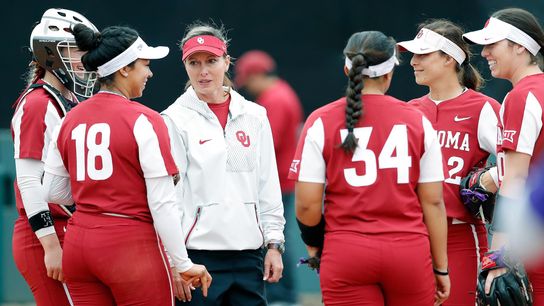A month into the coronavirus pandemic, two Division I teams that we know of have been cut -- Old Dominion wrestling and Cincinnati men's soccer. Sadly, we know more are coming, and we know that because Group of Five commissioners have asked NCAA president Mark Emmert for permission to cut sports.
NCAA rules require Division I schools to sponsor at least 16 sports, but an April 10 letter from the American, Mountain West, Conference USA, MAC and Sun Belt asked on behalf of their members from "temporary relief" from that rule in order to plug budget holes elsewhere. "Temporary" in this case means four years.
"In order to provide NCAA Division I institutions flexibility in addressing the challenges for the foreseeable future, we request temporary relief from several regulatory requirements for a period of up to four years. A blanket waiver for relief will provide institutions the ability to make prudent and necessary decisions for the financial well-being of the institution.”
View the full letter here:
COVID-19 NCAA Regulatory Wa... by Cody on Scribd
It doesn't take a bloodhound's sense of smell to sniff out that some of ADs could use the coronavirus crisis as political cover to axe sports they already had on their personal chopping blocks, and the Intercollegiate Coach Association Coalition -- a consortium of non-revenue sports coaches associations -- wrote a letter to each Division I commissioner urging them not to cut sports.
On behalf of the Intercollegiate Coach Association Coalition (ICAC), we hereby register our opposition to the request by the Group of Five Commissioners to allow conferences and schools to cut the number of sports sponsored to be considered for Division I status.
The economic impact of the Covid-19 pandemic places a lasting burden on both higher education and intercollegiate athletics alike, but slashing opportunities for students is not the solution.
Last year, NCAA Division I institutions provided educational opportunities for 141,483 students in Olympic sports. These are not just exceptional athletes, but outstanding students with graduation rates and donation rates higher than their non-athletic peers. These student-athletes generated $3.6 billion in tuition and fees to their universities, an amount nearly equal what it costs to provide these opportunities.
Sport fosters community and a life-long love for our colleges and universities, impacting alumni involvement, endowment and giving. We need these contributions now more than ever.
Our first and most important commitment must be to our students, and duty requires us to explore every possible avenue for maintaining our investment in them. Reducing the minimum sports sponsorship requirement that would open the door to eliminating sports should not be an option. We are all in this together, and we are ready, eager, and willing to partner with the NCAA to find creative solutions for the challenges to come. America’s students have had so much taken from them. Now is not the time to cut them off from yet another critical institution that makes university life so special.
We respectfully request anything related to the discussion of the number of sports sponsored to follow the protocol of legislative procedure that allows for discussion and collaboration.
We stand as a committed partner to consider how to balance the reality of athletic department budgets with the enrollment needs of institutions. We know that we can develop the structural changes needed to preserve these opportunities, support our collective educational mission, and build a stronger NCAA as we emerge from the COVID-19 pandemic.
The pandemic is putting pressure on stress points across the entire American economy, and college sports is no different. The ICAC (justifiably) argues cutting opportunities for college athletes should be the last move a college athletics department makes, not the first.
Ultimately, though, the argument that might carry the most sway with the commissioners is cold, hard economics. While ADs may attempt to justify cutting sports by arguing they bleed money for their departments, the ICAC argues that, yes, non-revenue sports may end up in the red on the athletics department's balance sheet, that doesn't really tell the entire story. From the final sentence of the third paragraph:
These student-athletes generated $3.6 billion in tuition and fees to their universities, an amount nearly equal what it costs to provide these opportunities.
As we sit here in late April, it seems nearly certain we'll have some sort of a football season, and just how normal that season is may determine whether or not other sports survive.
“I think we’re all worried about football,” Oklahoma softball coach Patty Gasso told The Athletic earlier this month. “I’m more worried about football than softball because if there’s no football, there may not be any softball. We all know that. I’m a realist and I’m more concerned about that than anything right now. It makes our university run, but it also allows all sports to go on. I think the scariest thought, and what I try not to think about, is sports getting cut.”
As always, stay tuned to The Scoop for the latest.
